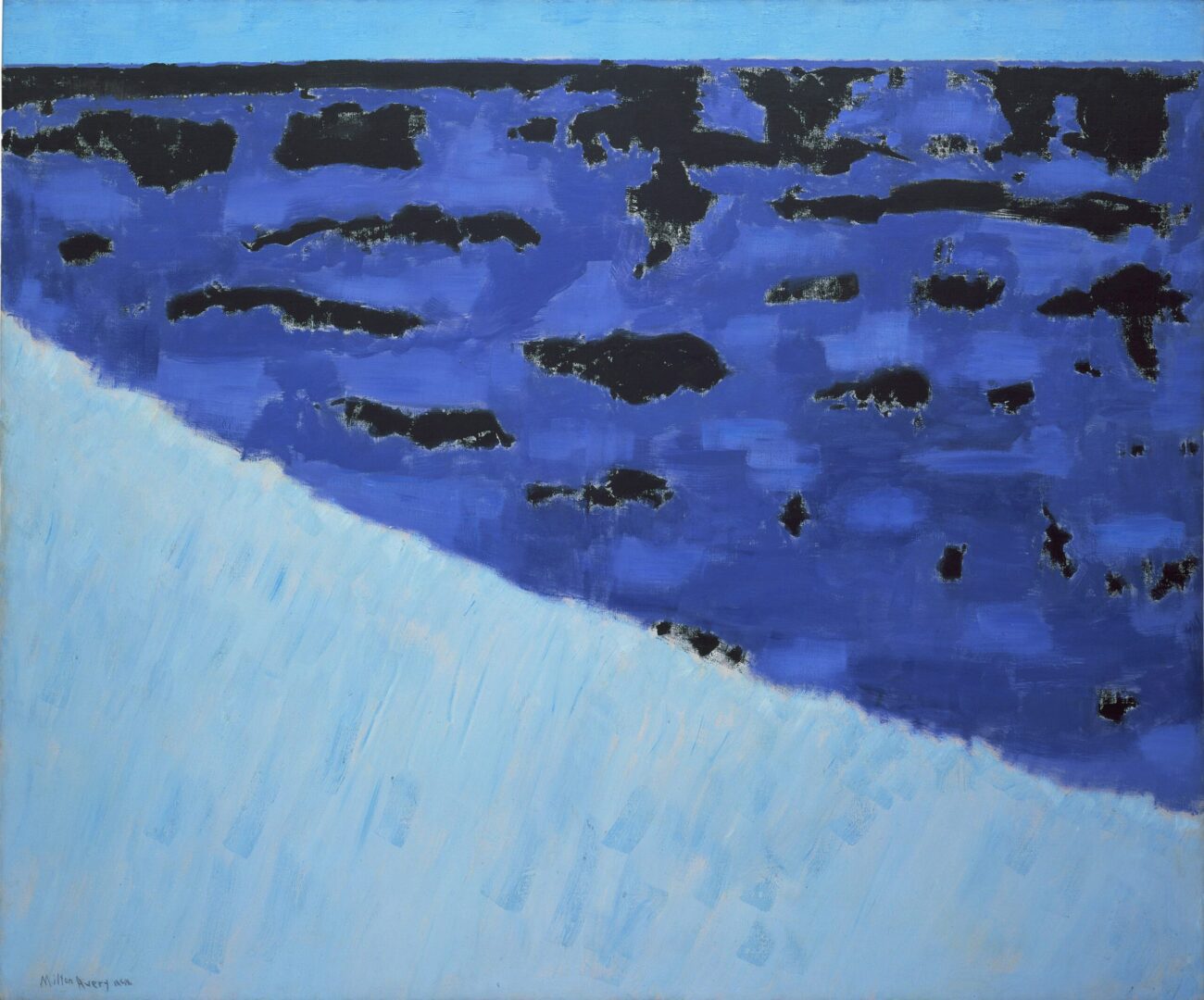HARTFORD — The evolution of Milton Avery as a figurative and abstract artist — and notable colorist — can be traced from his early landscapes to his late works in a wide-ranging retrospective of his paintings at the Wadsworth Atheneum Museum of Art that opens Saturday, March 5.
Arranged in chronological order, the 70-piece show reflects Avery’s personal life and artistic influences, culminating in the richly-colored figurative and abstract pieces he was later known for as a modernist painter.
The show is a kind of homecoming for Avery (1885–1965), who grew up near Hartford, where he took his first art classes at night at the Connecticut League of Art Students and later at the School of the Art Society of Hartford. In 1915, he exhibited his work for the first time at the Wadsworth Atheneum’s Fifth Annual Exhibition of Oil Paintings and Sculpture.
The retrospective — the first in 30 years in the U.S. — opens with Avery’s impressionistic landscapes painted en plein air on artist boards and pieces of canvas. It was the style of painting that was in vogue at the time, said Erin Monroe, the Krieble Curator of American Painting and Sculpture at the museum.
“They’re sort of like relics from an era that not many people are aware of, these formative years,” she said. “Avery is falling in love with painting nature, which is something that he continues to do throughout his career, through direct observation.”
On the adjacent walls, Avery’s next pieces, including “Moody Landscape” and later “Little Fox River” and “Blue Trees” begin to show his stylistic evolution toward the use of simplified forms and imaginative, non-local color.
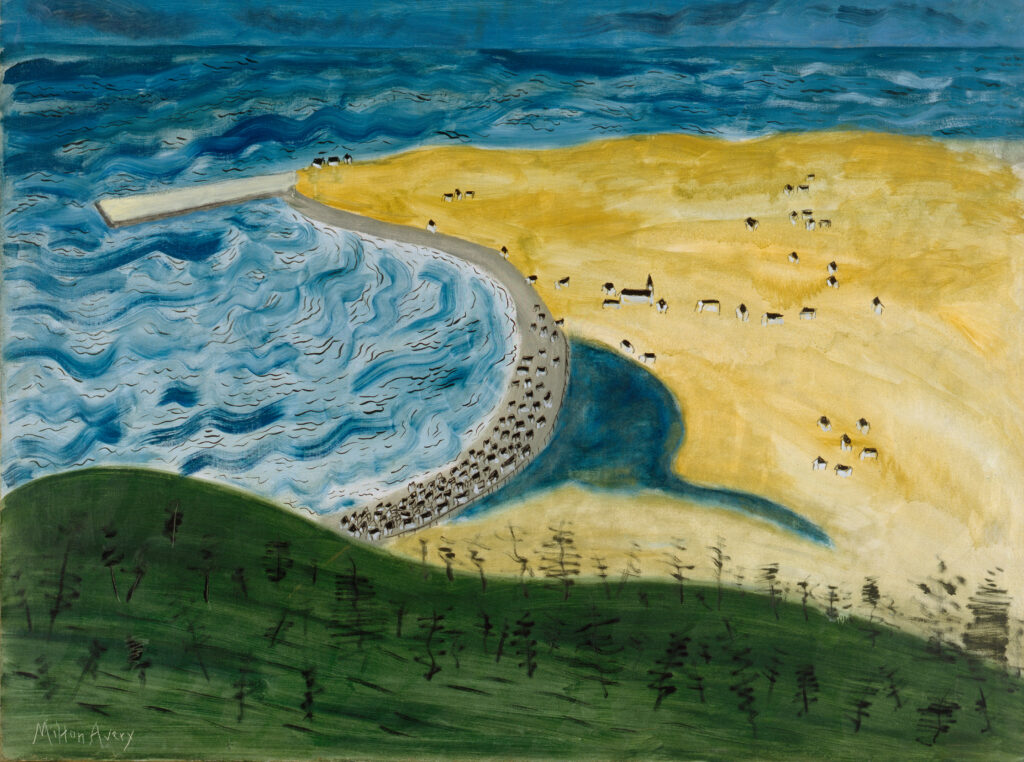
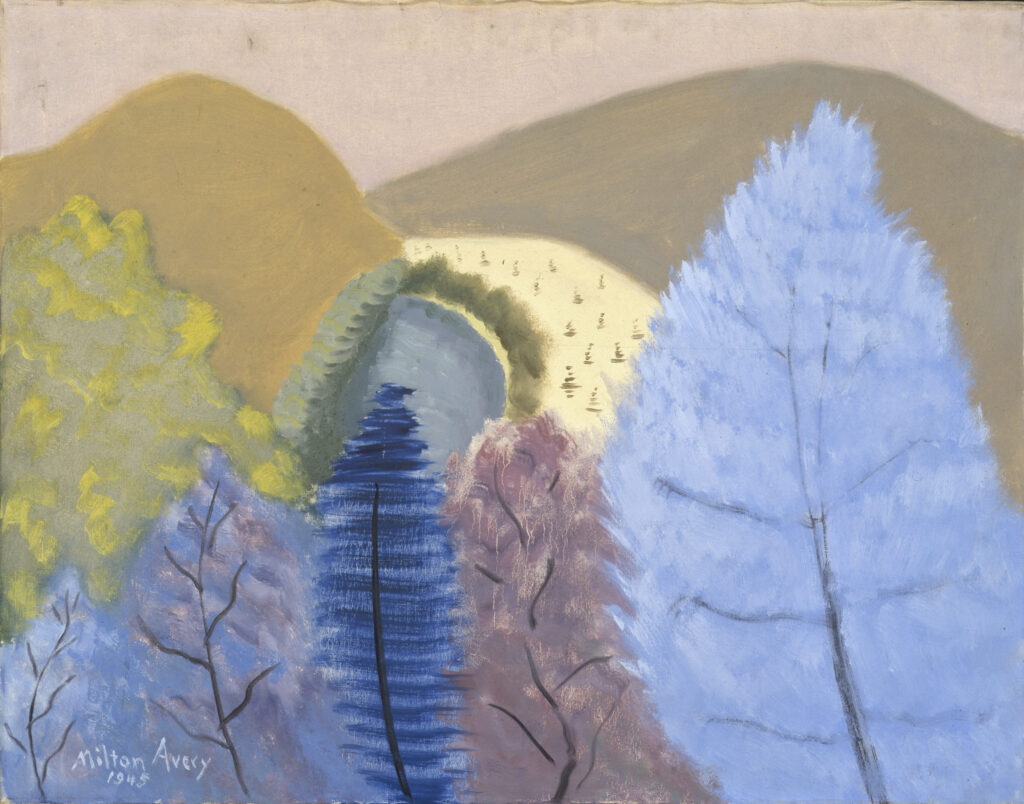
“He’s subtracting, and he’s playing with color, and these approaches become more extreme as we move on through the show,” Monroe said.
In 1920, Avery visited an artist’s colony in Gloucester, Mass., where he met painter Sally Michaels, whom he married. Avery and Michaels and their daughter March moved to New York City in 1925, where they befriended artists Mark Rothko and Robert Gottlieb, among others, and Avery began to show his work in New York galleries.
Over the next 20 years, he painted a range of subjects – people at Coney Island, farm animals, landscapes and cityscapes, and many scenes of everyday life of with family and friends — all the while reducing his forms to simple shapes, while he continued to hone his color palette that has been described as “poetic.”
In the last few galleries, a lifetime of experimentation blossoms into a number of stunning figurative pieces that reflect Avery’s development of flattened forms and complex color palettes, including “Husband and Wife” and “Poetry Reading,” among others.
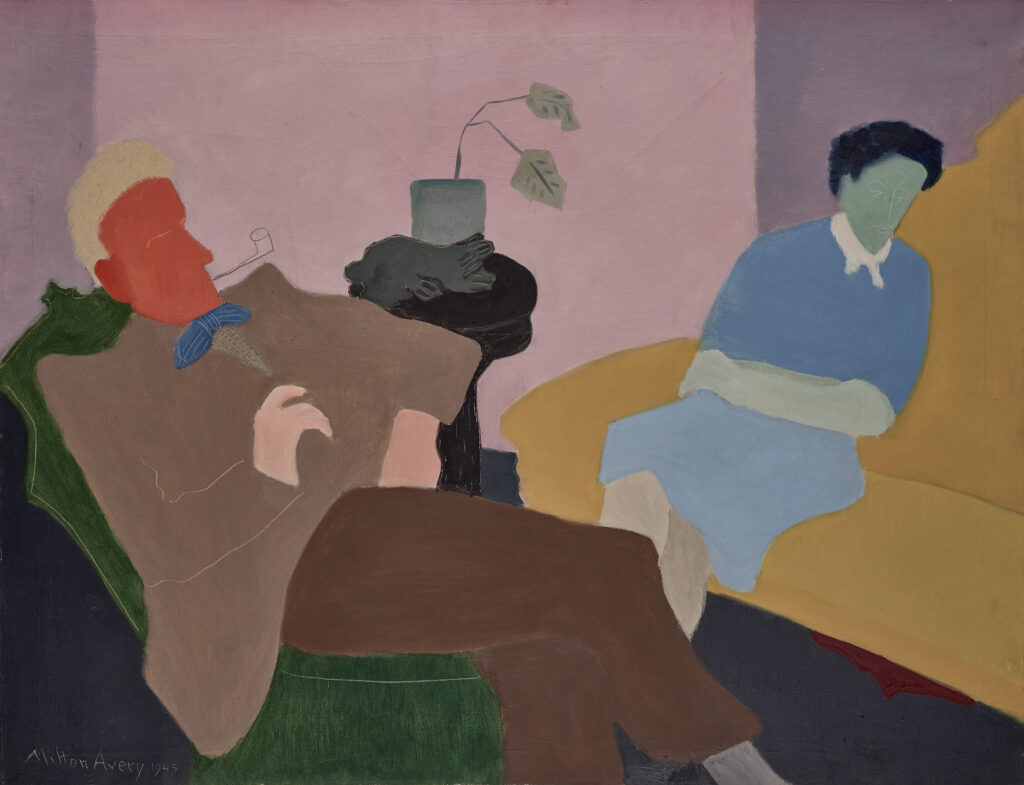
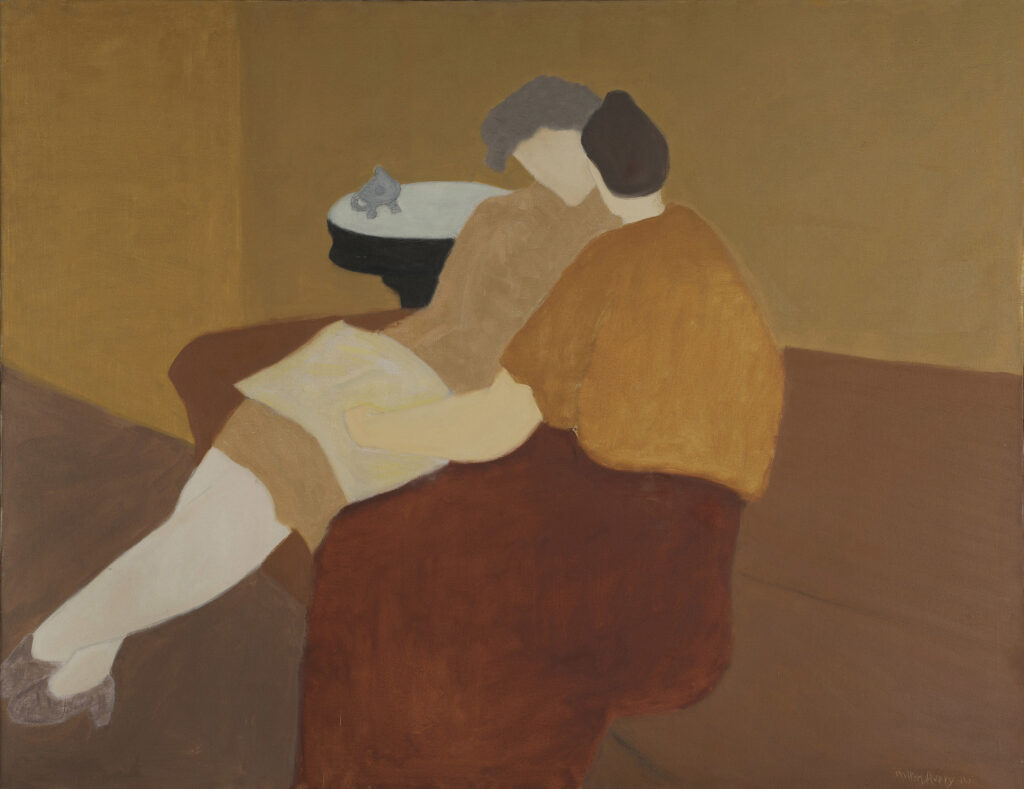
Monroe said Avery’s figures stand apart from traditional forms and styles, partly because of the way he distorts the human body.
“Avery’s figures are not idealized, they’re not super-sexualized. Sometimes they are stiff, and they look like paper cutouts, but at the same time he has a complete understanding of the body,” she said.
In the final galleries, Avery’s large, abstract beach scenes and seascapes that he produced during six consecutive summers he spent in Provincetown, cascade along the walls in bold color.
In one large work, “Beach Blankets,” an orange shape and a yellow shape float on a color field below a golden horizon and a dark line. In another, “Boathouse by the Sea,” wide bands of color seem to juxtapose sky, sea, sand and the angle of a roof.
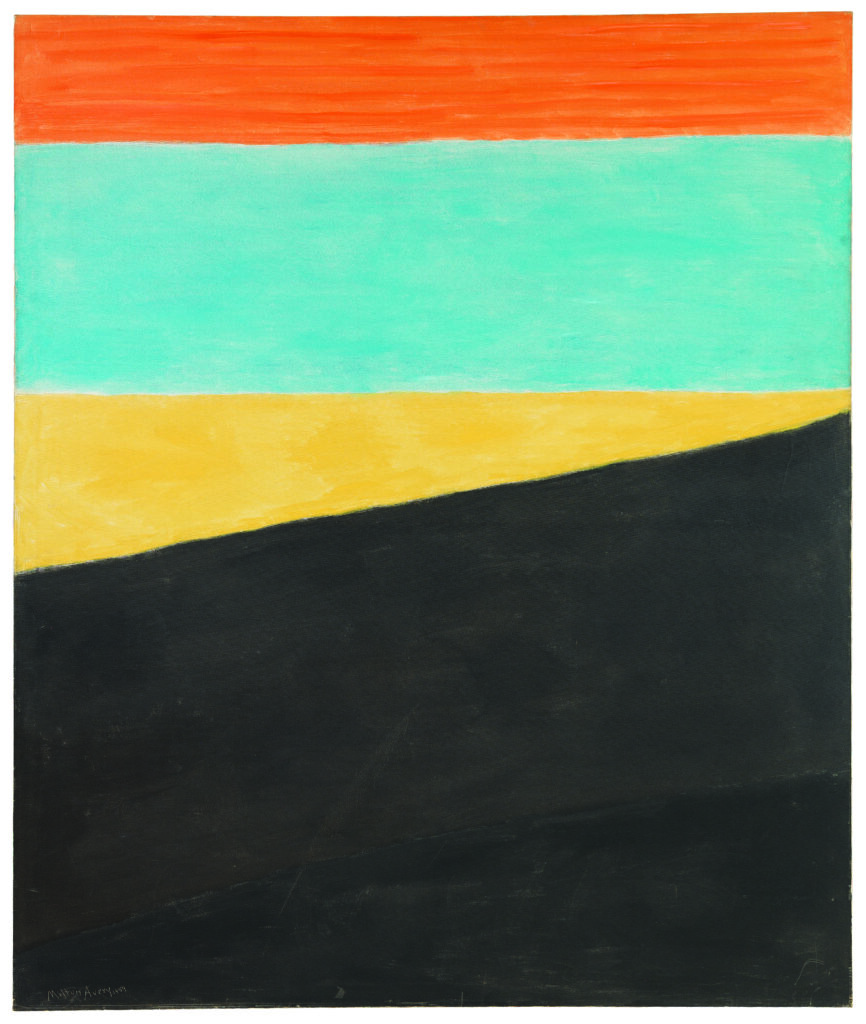
“This is where his highly distilled style begins to emerge, where he’s more reductive. He’s paring down even further,” said Monroe.
As the show closes, on the last wall is Avery’s “Speedboat’s Wake,” depicting a ghostly figure on a small vessel, drawing a thin white line in its wake as it travels through an expansive dark sea set below a richly-hued nighttime sky.
“Milton Avery” runs from March 5 to June 5. Go to thewadsworth.org for more information.
The exhibition was curated by Edith Devaney at the Royal Academy of Arts, London, Andrea Karnes at the Modern Art Museum of Fort Worth and Erin Monroe at the Wadsworth Atheneum Museum of Art.

